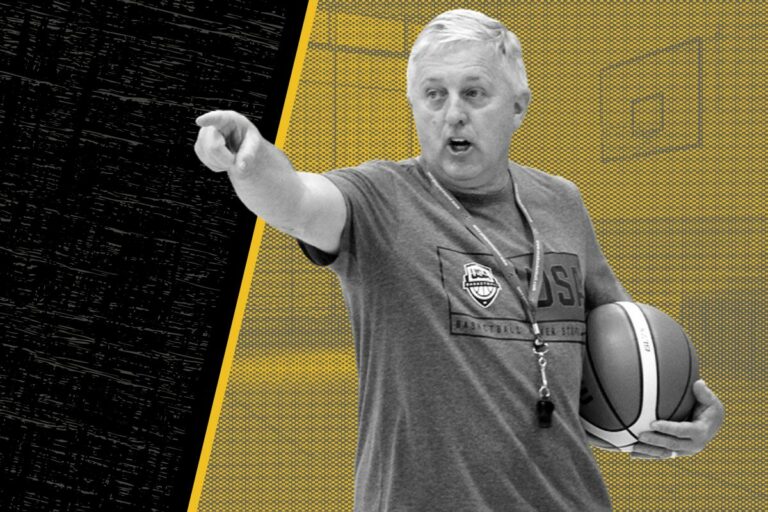How to develop grit leadership
- Utilizing a growth mindset will help you and your students excel both in the short-term, and long-term.
- How you perceive things may not always be the same as how students and teachers perceive them.
- The best leaders let other people shine as brightly as they can through their leadership, because we all have different things that we can do. Every loss can be a lesson.
Being a leader of students is a tough but rewarding experience. With a varying to-do list of responsibilities, growing classroom sizes, and expectations about you and your students’ performance, it can be a challenge to balance everything. But, it’s a challenge that people like Kevin Broene get up for.
“Winning is great, but I love the challenge of giving [student-athletes] something that they can leave with where they’re now a changed person because they were a part of the team that I led.”
Broene is a teacher, coach, and athletic director. Most recently, he added “company founder” to his list of titles. All of these have given him an incredible perspective on what it truly means to be a good leader for students.
In 2017, Broene’s unflinching commitment to uplifting students led him to found Grit Leadership. Grit Leadership is a leadership evaluation software that anonymously surveys thousands of coaches everywhere, giving Broene a bird’s eye view of the coaching field. With this data at his disposal, coach Broene has found areas where he and his fellow leaders can improve.
We spoke with him and learned four key tips that, based on his Grit Leadership platform, can help leaders everywhere become better.
1. Prioritize the Process, Not the Results
Prior to Grit Leadership, Broene went through a period where he, “got lost, trying to win.” This is far from a unique experience.
In any profession, it’s easy to become more concerned with the outcomes at the expense of everything else. This is especially so when your wins and losses are tracked.
“Trying to have the best Xs and O’s…it became more important for me to win. When I won, I could say, ‘I’m the expert, you need to listen to me.’ I lost sight of what I had set out to do, to elevate people. To help them become a better version of who they are.”
This period of Broene’s career led him to a revelation that would ultimately become a large part of the foundation for Grit Leadership.
“You know what it’s like when you’re on a thriving team. You don’t remember the wins a whole lot. Maybe you remember a record. You remember the locker room, the bus ride, and the funny stuff that you did. Perhaps you remember what you did after practice. Not really what you did in practice, but you remember what you did after practice.”
Other successful leaders have stated that prioritizing a healthy environment over win-loss records was ultimately the key to their success, some of whom are available here on Leading Edge.
2. Promote a “Growth Mindset”
Often, schools promote the ability to memorize and recall facts and formulas during specific scenarios, like exams. However, this process doesn’t necessarily lead to meaningful learning. Broene can attest to this.
As a teacher, and later athletic director, he has been responsible for developing curriculums and making sure his students learned information so that, “they could get to the big college and get to the big scholarship and all the things that they wanted.”
But no matter how many of his classes went over formulas and ACT/SAT prep materials, it wasn’t having a long-lasting effect. Sure, some of these students scored higher on standardized exams. But, generally speaking, they weren’t properly equipped to handle real-world challenges outside of the classroom.
“I started researching to figure out what [we could] do to get this output—to get the [lessons] to translate. We needed to develop attributes. After reading a million things, one of the main attributes that I thought was missing was grit. It started this question in me, ‘how do we develop grit?’”
Grit, in this context, refers to a combination of passion and perseverance. The idea of developing it is hardly a new one, but it is still worth understanding and implementing.
Broene found inspiration in Angela Duckworth’s TED Talk and began researching the idea of a “growth mindset.”
“How do we build that? And then what feeds into that? If people knew this — [people] that are well-meaning loving people — [that] they’re accidentally messing some things up just like I was. What if we could teach them how to not mess it up? Like if we could give ’em the key right now, they could make a difference from the start.”
3. Embrace Humility
Broene’s career has shown him firsthand how essential both humility and vulnerability are to embracing a growth mindset. Keeping an open mind and a willingness to work with others can benefit all parties.
“One of the foundations of [a] growth-oriented mindset is that you’re not set good or set bad at all. Right? You can always become something different. You can always become something more. To the same extent, you could become something worse, if you’re not paying attention.”
To help coaches change for the better and not the worse, Broene uses his Grit Leadership software to make coaches genuinely reflect on themselves. The survey asks students to anonymously rate particular qualities about their leader, not how many games they won or how many championships they captured.
Then, coaches must rate their own answers and compare them to their students’ answers.
“So you have to be critical of yourself, not because you’re trying to impress the AD, but because you have to compare your stats to what the kids think of you. I can now see myself through the eyes of a student. How do I come off in these scenarios to my kids?”
This approach gets coaches to self-reflect and truly understand themselves. This facilitates profound growth.
4. Balancing Perception vs. Reality
Right or wrong, the way we perceive the world and those around us can influence us more than facts.
“You know, it’s something that people don’t like to think about, ‘oh, that’s not really me,’ but the perception is actually what people are gonna believe about you.”
Again, this is something Broene experienced as well while going through the hiring process for a new coach. While looking through potential candidates, he came across a well-qualified candidate who had bounced around several jobs because of a perceived inability to work with the administration.
“When we got this coach, we experienced exactly the same thing. He was driving us nuts. And if it was up to us because of how it drove us crazy, and the number of things, the headaches he gave us between us and him, we probably would’ve released him just like everybody else.”
However, Broene noticed something interesting. “The second year, [Grit Leadership] was developed and we sent it out and sure enough, the kids and the parents felt like he was absolutely a knockout, like unbelievable.”
This evaluation led Broene to keep this coach around, to the benefit of their students. “We had him for eight years. He’s now the head coach or assistant head coach in a college program now — he’s that good of a coach. And he serves people that well.”
Had Broene not invented the Grit Leadership system, this coach would have been let go, both to the detriment of their career, and their students as well. Just because we may think or see something one way, does not mean that it is always the right way.
More From Kevin Broene on The Leading Edge Podcast
Through the rest of his interview, Broene imparted us with many more lessons that can be applied to any aspect of life, not just coaching sports. Listen to the full podcast below to get even more insights into how to be a better leader and leave a lasting impression on your students.
To learn more about Kevin’s work, visit his website: www.gritleadershipea.com












